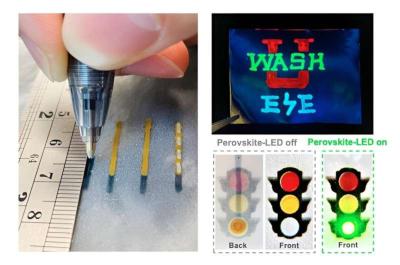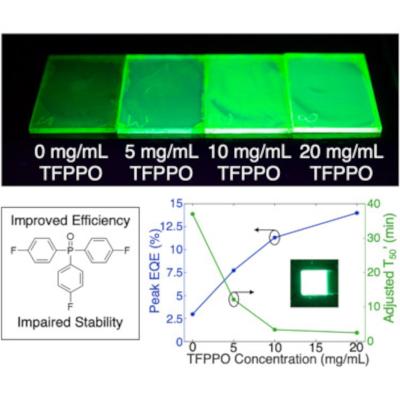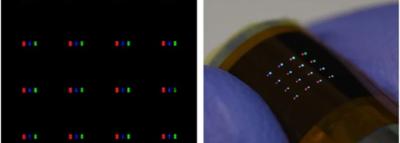Researchers report self-assembled monolayer–based blue perovskite LEDs
Researchers from the University of Toronto, Peking University and Soochow University have studied the origins of unwanted emission in monolayer perovskite LEDs when the active layer thickness approaches ~5 nm and found that using available fabrication techniques results in a rough perovskite/HTL interface which leads to punch-through and direct electrical interaction between HTL and ETL (electron-transporting layer), and consequently, to undesired exciplex emission in LEDs.
The team sought to control monolayer interfaces in Rec.2100 primary blue perovskite LEDs and recognized that a well-defined, ordered, and compact monolayer film could suppress HTL/ETL interaction. They reasoned that this could be achieved if they could alter the polarity of the CsPbBr3 c-NC surface and thereby induce perovskite self-assembly down to the monolayer limit [i.e., self-assembled monolayer (SAM)] through the use of an HTL-compatible ligand. Self-assembled films with ordered nanocrystal arrangement maximize the interactions between nanocrystals and provide homogeneity needed for monolayer films with ~5-nm thickness.








